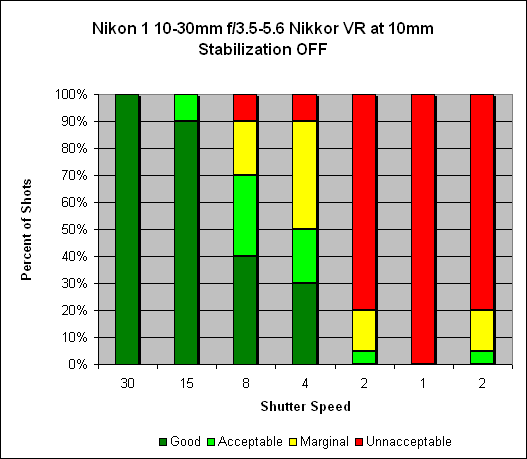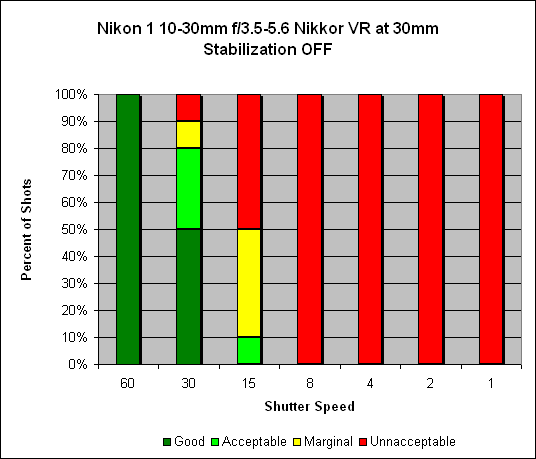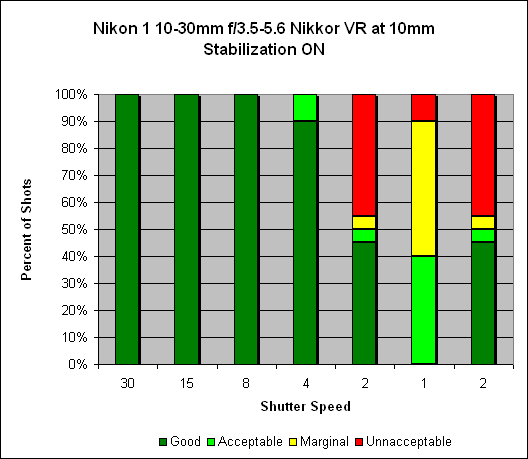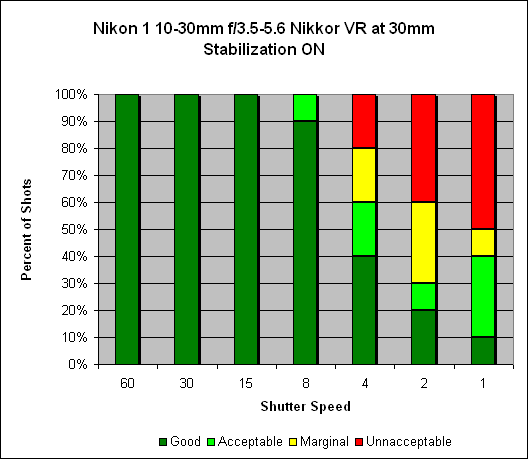Most people tend to think of image stabilization as being mainly for telephoto lenses. While it's true that their longer focal lengths tend to magnify the effects of camera shake, image stabilization can provde a very useful assist at wider angle focal lengths as well; anyone who's ever tried to blur the image of a waterfall, while keeping the surrounding landsape tack-sharp knows exactly what I'm talking about.
Used at the 10mm setting, vibration reduction provides some modest gains - around two and a half stops, making sharp shots possible quite reliably at 1/4s, and around half the time at 1/2s. What's interesting is a quality gain at the two seconds mark, where Rob was able to get sharp photographs almost half the time.
 |
| Mouse over this chart to show results with IS activated. |
As expected, there is a bit more improvement to be found at the 30mm setting, where we noted stabilizing performance of around three stops. Shots that were occasionally blurry at 1/30s were now consistently sharp, and it became possible to shoot sharp shots at speeds as low as 1/8s, even sometimes at 1/4s.
 |
| Mouse over this chart to show results with IS activated. |
IS systems tend to provide more benefit to less-stable shooters than very steady ones, so most users will see the same or greater amounts of shake reduction as we measured here. You can read more about our IS test methodology here: SLRgear IS Test Methodology, v2.

